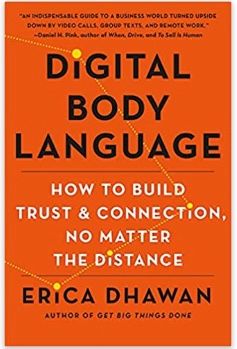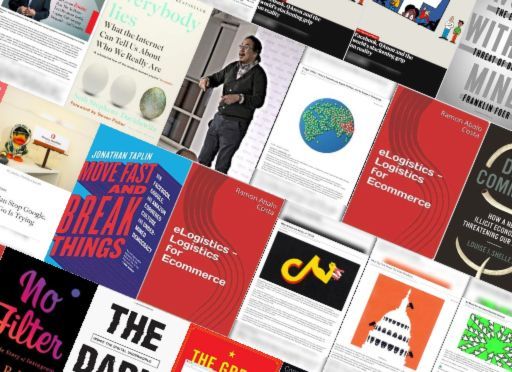Master online communication: You can avoid sending inadvertent digital signals – or misinterpreting the messages your receive – if you know the code.

Digital Manners
Erica Dhawan is a leadership expert, frequent speaker and founder-CEO of the consulting firm Cotential. She argues convincingly that misinterpreting the intention of digital messages – or inadvertently sending the wrong signals – can lead to conflict, missed opportunities, paranoia and anxiety. Dhawan helps you decipher the subtle art of “digital body language” – so you are aware of the implications of the online messages you send and receive. She says innocuous habits – like how you use punctuation or emojis – can distort your meaning.
Whether you’re a digital native, digitally adept or a digital novice, Dhawan’s accessible, relatable guidebook can help you decode online language, build more trusting relationships and navigate the future of digital work more powerfully. Anyone under 25 probably unconsciously adopted much of Dhawan’s advice before they reached sixth grade, so she performs a valuable service by teaching everyone else how to be clear, look sharp and avoid giving inadvertent offense. Even digital natives and experienced online business practitioners will appreciate her advice about online manners in a corporate context.
Trustworthiness
Learning to decipher digital body language, which is practically its own culture, improves your interactions. Dhawan reports that people misinterpret the tone of half of all emails, so those messages can provoke distrust, paranoia, fear and anxiety. She warns you to be aware of how others might perceive your digital habits – from misusing punctuation to ignoring voice mails.
Today we’re all ‘immigrants’ learning a new culture and language, except this time it’s in the digital space.Erica Dhawan
Dhawan argues, usually persuasively, that professional digital body language signals that you’re a trustworthy leader. She could just as easily have said that good manners improve interactions whatever the media.
Power Relationships
Dhawan observes that you probably respond more quickly to your bosses and write more careful, concise and substantive messages than you send to your subordinates. She warns that writing “as per my last email” makes you seem passive-aggressive, and people might perceive it as microagression. In the absence of a clear power dynamic, Dhawan says to answer urgent messages immediately. Elegantly reminding you that the boss is the boss, she recommends being precisely as formal as the most powerful person in the conversation.
Emojis, CAPS & !!!
The digital channel you choose, Dhawan notes, signals how you prioritize an interaction, especially if you switch an existing conversation to a new platform.
Consider whether your recipient wants a formal or less-formal exchange before sending emails full of acronyms and emojis. For example, according to Dhawan’s decoding, ellipses may convey that you’re withholding information or displaying hostility. If you write in capital letters, people may interpret your tone as angry or extra urgent. Exclamation points demonstrate friendliness and, to most people, signal a female correspondent. For clear communication, keep them at a minimum whatever your gender. Dhawan echoes oft-given advice when she tells women not to use hedging language, such as “I think,” and to avoid apologies and flattery. Male or female, she warns, never tolerate or indulge in mansplaining.
We all have biases and expectations of how men and women communicate, but remember, they’re not always true.Erica Dhawan
Offering useful information for those who aren’t digitally adept, Dhawan teaches that digital natives usually prefer texting over calling and emailing; ignore voice messages; avoid in-person and phone meetings; and respond to calls with texts. So, she adds, when someone does all that, don’t take it personally. Generally, she says, expect a day’s delay for an email response, but anticipate faster replies to texts. Dhawan believes you should answer either one quickly. Consider whether you need to include other people before you use reply all, cc or bcc.
Be wary, she reminds you, of being the first person in a conversation to use informal language. Also, don’t use culturally specific abbreviations or jargon that people might misunderstand.Be mindful of the messages your online life may send, since any prospective employer will search for you online. Every entry, from the name you use to the profile photo you post, sends signals.
High and Low
Dhawan compares high-context and low-context cultures. High-context cultures, in her analysis, rely on nonverbal cues and dominate in Asia, the Middle East, the Mediterranean, Latin America, Central Europe and Africa. Low-context cultures, prevalent throughout the Western world, rely on explicit language.
If you ignore gender or cultural differences, they’ll simply grow in size.Erica Dhawan
People from high-context cultures prefer to build trust through phone conversations and in-person meetings. However, Dhawan reports, people from low-context cultures build trust through text and email. People from high-context cultures feel anxious about digital silences; those from low-context cultures take silence to mean someone is formulating a response.
Dhawan says to focus on details with high-context people and request responses to confirm agreements. With people from low-context cultures, she asserts, be concise and direct; highlight details with bold text and bullet points; and never include personal remarks with work requests.
Follow the Law
Dhawan lays out four useful laws that govern digital body language. First, “value visibly,” that is, show clearly that you are being attentive. Read email carefully, write clearly, proofread your messages and don’t cancel planned calls. Her second law is to “communicate carefully” with streamlined messages. Establish unambiguous expectations and norms, such as expected response times. Dhawan says to “collaborate confidently” by empowering your team members to speak up, minimizing group speak and giving introverts openings to speak or use chat. In her view, confident leaders manage to exude a strong executive presence, even in digital spaces, and know how to facilitate a discussion instead of monopolizing it. Dhawan cites “trust totally” as her fourth rule, by which she means that you should build a trust-based team culture and respect collective norms.
The author cautions that digital natives and the digitally adept are the ones who set the etiquette standards for digital communication, and other users will fare better in the corporate world if they adapt accordingly.
Effective digital body language is about tailoring communication – not to fit the natural preferences of one generation over the other but to meet the demands of the task at hand. Erica Dhawan
Dhawan reaches for larger themes – such as how your online manners convey your trustworthiness or leadership potential – though they sometimes exceed her scope. And, she tries to dress up her basic, worthwhile, necessary advice, as if she does not accept its great value – but her readers will. After all, everyone can use a little digital polish.
Erica Dhawan is a pioneer in this arena. Worthy books that relate to her purpose of helping you gain more awareness of your own processes include Noise by Daniel Kahneman, Oliver Sibony and Cass R. Sunstein; Dedicated by Pete Davis; and Subtract by Leidy Klotz.








